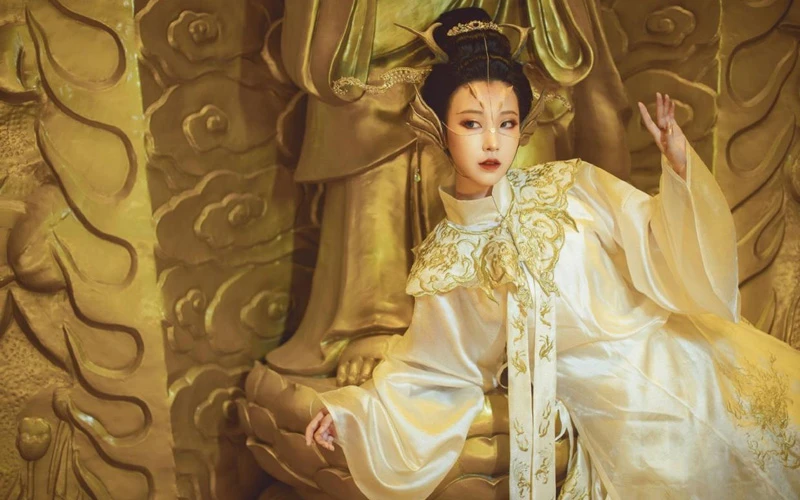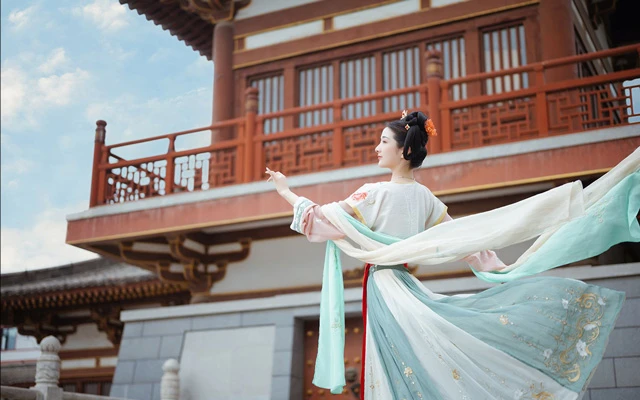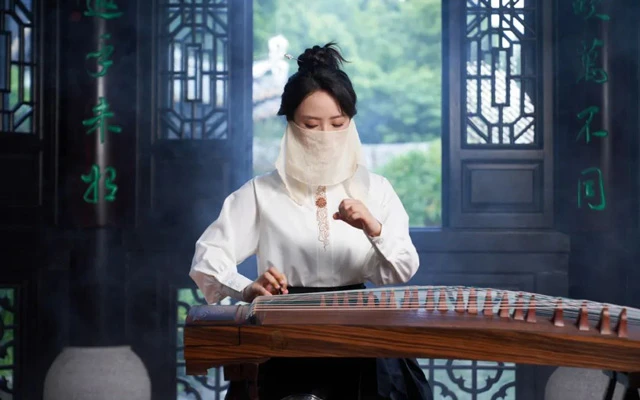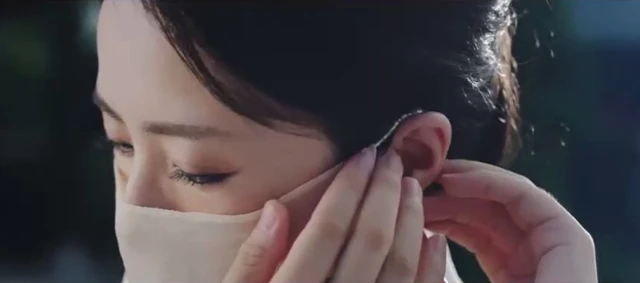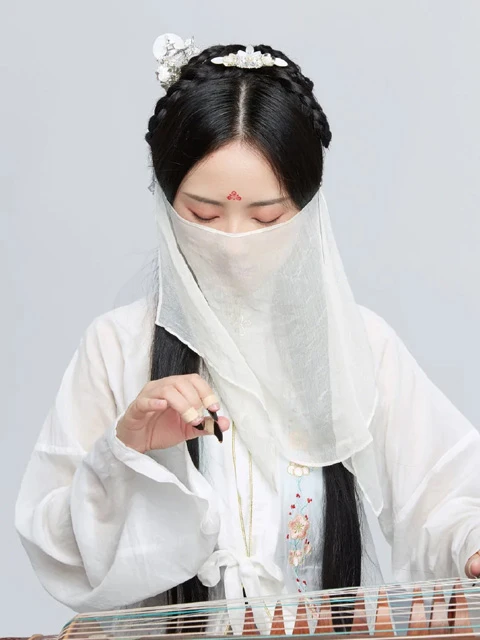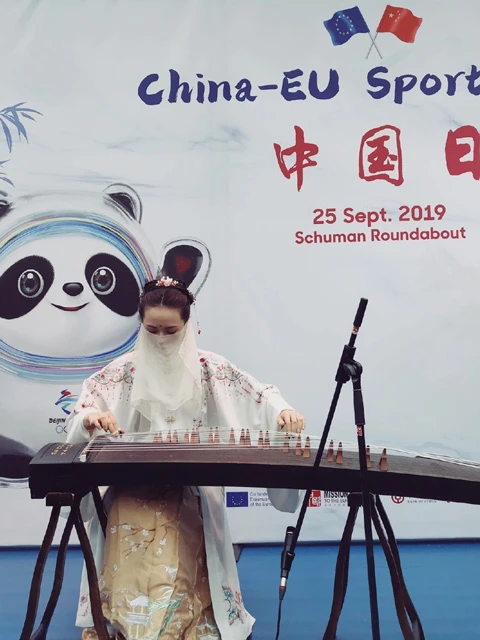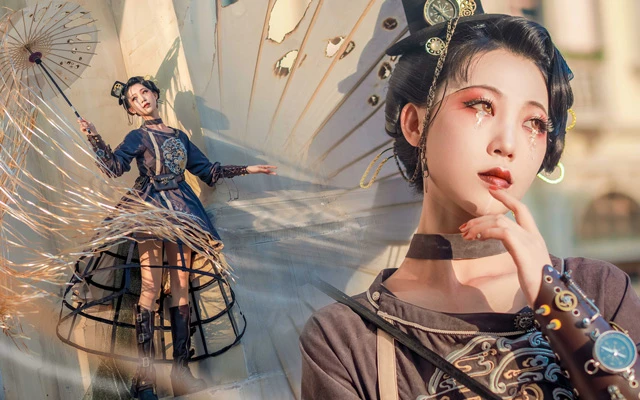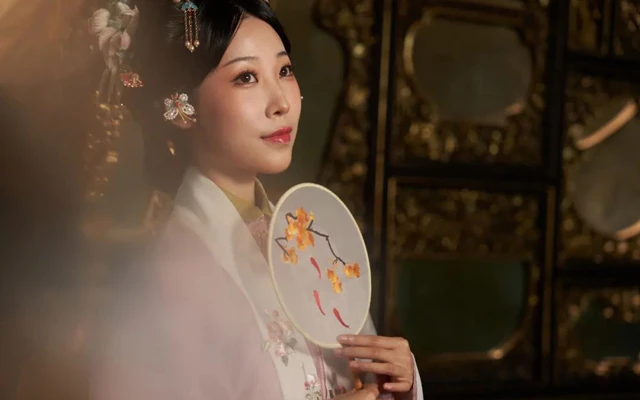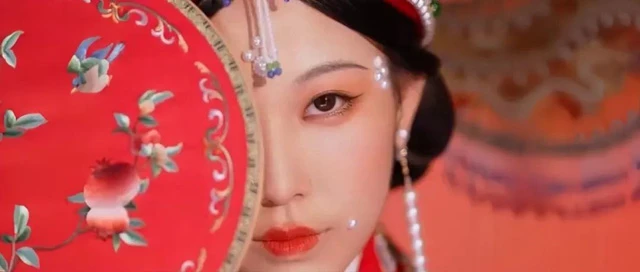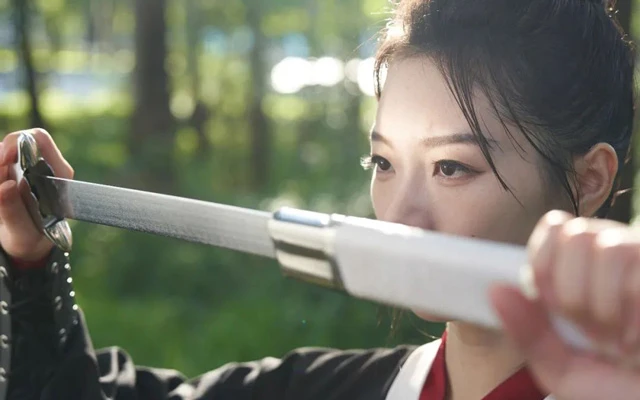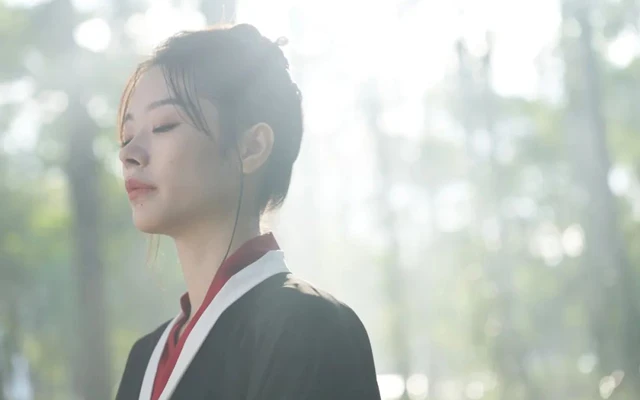When mentioning the beauty of the east, what comes to mind? Perhaps it is the harmonious and melodious sounds of classical music, the graceful and elegant hanfu attire, or the combination of strength and grace in martial arts. Eastern beauty has always been an aspirational image portrayed in Chinese classical literary works.
In recent years, whether it is the popularity of ancient costume dramas and music, or the rise of the Chinoiserie trend in the fashion industry, the eastern temperament has become more than just an external aesthetic, but also a unique inner charm. The pursuit of the beauty of the East is gradually becoming a realm pursued by the modern people. New Weekly recently had a conversation with three women who embody different eastern characteristics, aiming to find the answer to the beauty of the east through their stories.
Mo Yun
The eastern beauty of music lies in its simplicity and subtlety. In 2014, Mo Yun, then a junior in college, gained fame with a video that garnered 58 million views and over 2 million fans. It was a video of her playing anime songs on the Guzheng, a traditional Chinese zither. Her astonishing speed in playing left a deep impression on many.
Mo Yun's first encounter with the Guzheng was due to her elementary school Chinese teacher's introduction. Initially, as a young child, she did not understand the cultural significance embodied in this instrument, and simply regarded it as a hobby to enrich her childhood.
However, one day, Mo Yun stumbled upon a guzheng video by renowned Guzheng master Chang Jing called "Breath," in which modern electronic music blended harmoniously with the traditional guzheng, making the originally profound mood more vibrant. This refreshing experience opened Mo Yun's eyes, revealing that the boundaries of this instrument lie in the limits of the musician's imagination.
After entering the Chinese language department in college, Mo Yun embarked on a more systematic study of traditional culture and gained a clearer understanding of the Guzheng as a physical carrier of a thousand years of history, with its unique advantage in presenting and interpreting traditional culture. Therefore, after graduating, she focused on expressing her understanding of culture and musical instruments through videos.
At that time, it was trendy to play popular music with classical instruments. As Mo Yun had always been fond of ancient style and anime songs, she began to experiment with filming videos of herself playing these songs. She spent nearly half a year preparing for her first video, practicing up to 16 hours a day in an extreme state. The video became an instant hit, and Mo Yun embarked on a path of combining traditional and modern elements in guzheng composition.
In her performance videos, Mo Yun likes to wear hanfu and a face veil. She believes that the combination of traditional costumes and traditional instruments in suitable pieces creates a more harmonious visual and auditory experience. The veil, on the other hand, is intended to shift the focus more towards the music itself. She prefers to minimize her personal presence.
In Mo Yun's view, the more well-known a traditional instrument is, the harder it seems to break free from the stereotypes imposed upon it by the public. However, in recent years, with the development of self-media and increased exposure to traditional Chinese music, the public's attention to the field of traditional music has also grown. Like Mo Yun, more and more creators are incorporating elements of traditional music into their works. Mo Yun hopes that through the efforts of generations of musicians in the traditional music field, traditional Chinese instruments can become better known, not only in different cultural circles of different eras but also as a comfortable space for self-expression.
In Mo Yun's understanding, the music that embodies the beauty of the east is expressive. It may not have grand orchestras, intricate harmonies, or elaborate rhetoric, but with just a single note or a sigh, it can envelop the listener with a certain atmosphere.
At the same time, she also believes that the music that represents the beauty of the east leaves room for interpretation. Traditional culture is reserved and understated, and the aesthetic theme of silence is better than sound and words can't express infinite ideas is something that artistic creators are passionate about.
Lao Ba Ba
The eastern beauty of hanfu is the aesthetic accumulation of the Chinese people over thousands of years. Lao Ba Ba, a post-95 blogger, is known as the first beautiful girl in hanfu by her fans. Unlike the conventional gentle and graceful hanfu styles, Lao Ba Ba excels in combining Hanfu with various Chinese traditional elements and pairs them with her own unique makeup designs, creating a distinct sense of fashion. Her outfits such as the "Hanfu Mechanical Girl" in Ming dynasty-style hanfu, and the styling inspired by the exquisite Qing dynasty gold and blue porcelain, have become her breakthrough works.
Lao Ba Ba became a hanfu blogger by chance. Many years ago, hanfu was not as popular online as it is today. During her first trip to Dunhuang, Lao Ba Ba was greatly shocked when she saw the figures in traditional costumes depicted in the murals of the Tang Dynasty. Inspired by this, she recreated a complete set of Hanfu costumes and made her first video related to hanfu.
Before becoming a full-time blogger, Lao Ba Ba was a teacher. When she quit her stable job and immersed herself in the beauty industry, her family didn't quite understand her decision. However, Lao Ba Ba seemed determined. She didn't want a predictable life; instead, she wanted to devote herself to something she loved.
As she continued making videos, Lao Ba Ba's skills and knowledge expanded. In addition to hanfu-related videos, she explored a wider range of topics related to traditional culture. To study the makeup and adornment of women from different eras, she collected many relevant books. She discovered that Chinese women's aesthetics are closely tied to the social environment of each era.
In Lao Ba Ba's eyes, the beauty of the east represents the aesthetic accumulation of generations of Chinese people over thousands of years, and beauty itself has no definitive answer. Whether tracing back to tradition or innovating, the charm of the beauty of the east can accommodate both.
Zhang Tingting
Just by looking at her appearance, Zhang Tingting in her 20s is a gentle girl with a clear face and long flowing hair. But her other identity is a Wushu world champion and national wushu set sports athlete.
Learning traditional wushu was a coincidence. Zhang Tingting loved watching fairy dramas when she was a child and would often act out the martial arts characters she saw on TV at home. In addition to her poor health since childhood, she was often sick, so her family thought it would be better to send her to practice martial arts to strengthen her body.
However, practicing martial arts as a girl is a challenging process. Zhang Tingting has suffered many injuries. Once, a week before a competition, she banged her knee on the ground while practicing a difficult move. At the time, Zhang Tingting didn't think it was too serious. However, when she arrived at the competition, even squatting was difficult for her. During the competition, she made a mistake in the same move, but she still persevered and completed the entire routine.
The hardships and efforts of learning martial arts bring about a stronger inner strength than that of ordinary people. Over the years, when faced with setbacks, Zhang Tingting often questioned whether she was suitable to continue training. "There are many reasons to give up, but there is only one reason to persist, and that is when you stand on the podium and achieve outstanding results for your country, you will realize that all the efforts are rewarded," she said.
Even after retiring, Zhang Tingting has not given up on practicing martial arts. It has become an indispensable part of her life. Nowadays, she shares videos of her training on social media and also teaches, hoping to pass on Chinese martial arts in different ways.
Some people often have biases against girls who practice martial arts, thinking that they are not feminine or gentle enough. But Zhang Tingting believes that girls should not be defined by one particular way. Beauty can be expressed in many different ways, and it is not just about appearances; it is also a unique inner temperament.
In Zhang Tingting's eyes, the beauty of martial arts in the east is a harmonious blend of strength and softness. It is unique and diverse: Tai Chi is graceful, Long Fist is elegant, smooth, and clean, and Southern Fist is vigorous and brave. Martial arts itself is a part of traditional Chinese culture, and each style can reflect a different kind of eastern beauty.
Just like Mo Yun, Lao Ba Ba, and Zhang Tingting, Chinese women are finding their own eastern charm. Within the profound heritage of tradition, they reject uniformity and strive to showcase their individuality and innovation. And on their journey, they are writing the answer to the beauty of the east.
